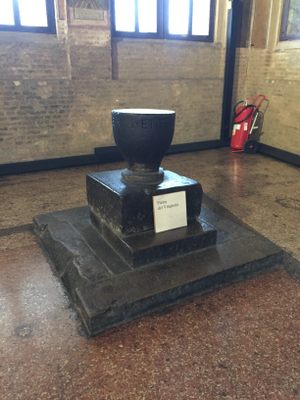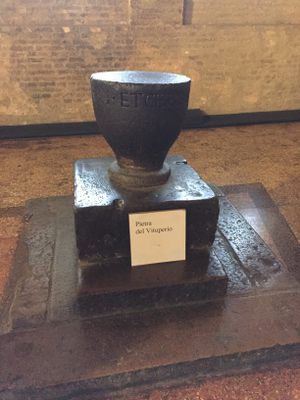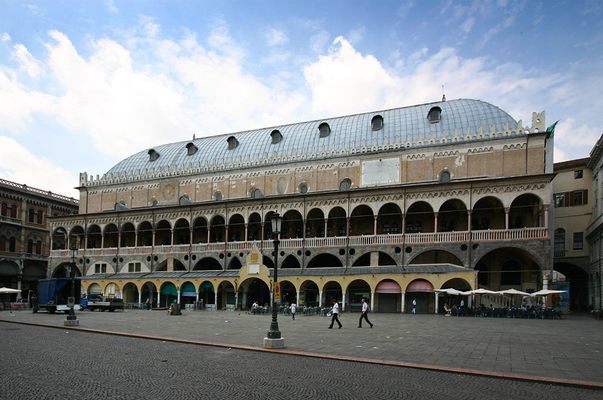About
The Palazzo della Ragione is one of the most famous buildings in Padua. Built in the 13th century, it served as the town hall and housed the city court. The huge hall inside is decorated by many paintings, and home to plenty of curiosities that should not be missed, like the 19-foot-tall wooden horse and an example of a Foucault pendulum. But while exploring these more obvious features, don't overlook the small Pietra del Vituperio in the corner.
The Pietra del Vituperio, or "Stone of Shame," is a small block of black porphyry perched on a square base. Its origin dates back to 1231, when a local friar, pleading the cause of some insolvent debtors, suggested that the sentence to perpetual prison be abolished. Instead, a new punishment was designed: In the presence of at least 100 witnesses, the debtor was forced to undress, remaining only in shirt and underwear, and pronounce their renunciation to worldly goods. The process was repeated three times until sufficient public humiliation was achieved.
Even having suffered this punishment, the debtor had to leave the city. If they came back to Padua without the consent of their creditors, he would have to repeat the punishment, but this time with a bucket of water thrown on him every time he sat on the stone. The shaming stone was placed at the center of the hall of justice and used as a form of punishment for centuries.
Related Tags
Know Before You Go
The stone is located in the northeastern corner of the hall inside the Palazzo della Ragione. There is a small entrance fee to enter the palace
Flavors of Italy: Roman Carbonara, Florentine Steak & Venetian Cocktails
Savor local cuisine across Rome, Florence & Venice.
Book NowPublished
January 28, 2019


































